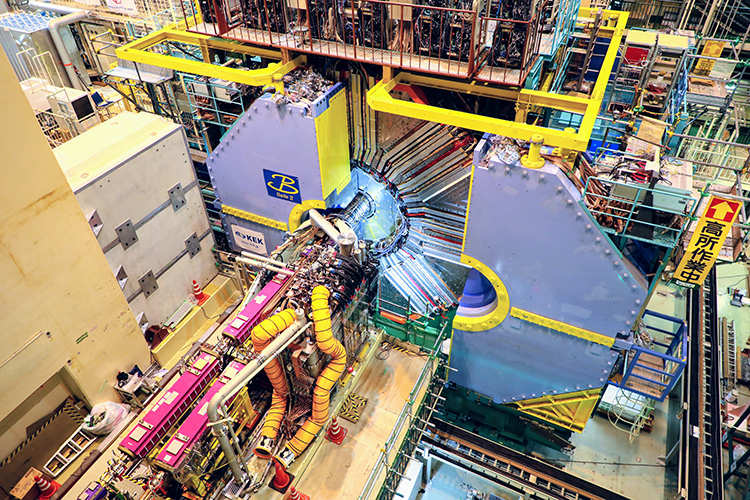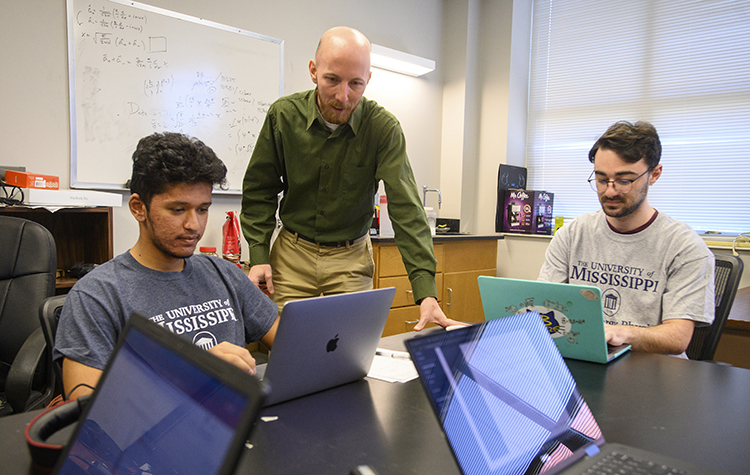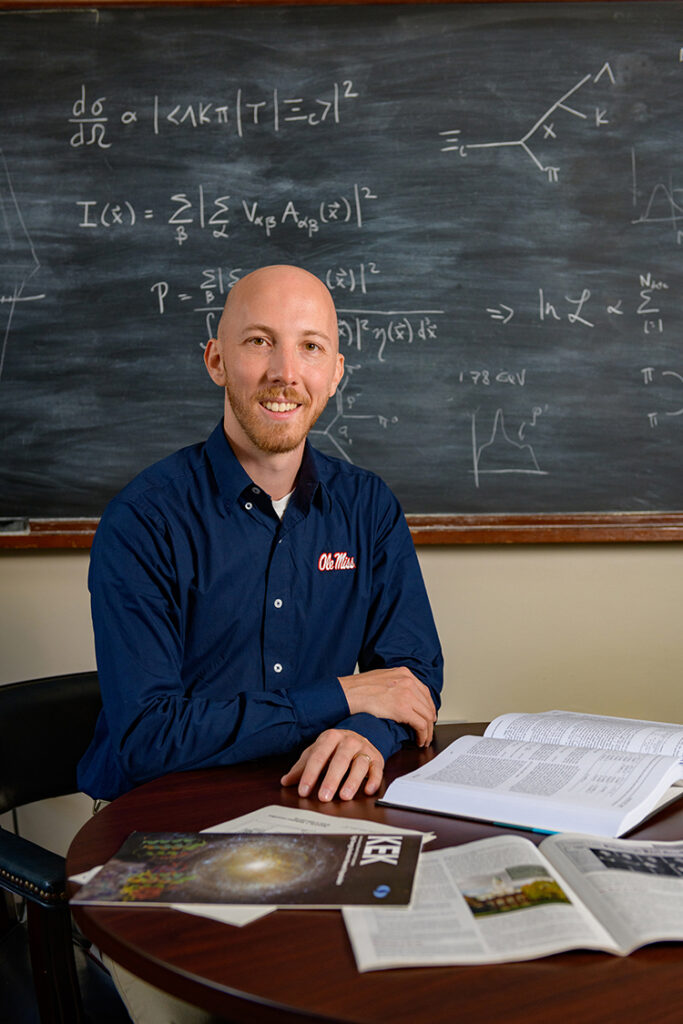
University of Mississippi physicist Jake Bennett and his colleagues use data from the Belle II experiment in Japan to precisely measure the lifespan of charmed baryons. The experiment uses a giant electron-positron collider at the SuperKEKB facility to crash electrons and positrons into one another at close to the speed of light. Photo by Shota Takahashi
Professor’s work to measure lifespans of charmed baryons featured in prestigious journal
University of Mississippi physicist Jake Bennett studies a group of fleeting subatomic particles in hopes of advancing understanding of the fundamental building blocks that make up matter in the universe, and he is part of a team that has precisely measured the lifespan of one such particle.
Bennett is part of an international group studying charmed baryons, which are similar to protons and neutrons, but contain heavy second-generation quarks not seen in typical matter. These particles, referred to as Λc+, can only exist in high-energy environments such as the universe right after the big bang or in particle accelerators, and they decay, or break down into smaller particles, within fractions of a second.
Physical Review Letters published Bennett’s most recent results, “Measurement of the Λc+ Lifetime,” on February 21, 2023.
His work uses data from the Belle II experiment, a global collaboration of physicists and engineers dedicated to studying subatomic particles and their interactions. Launched in 2018, Belle II uses an electron-positron collider at the SuperKEKB facility in Tsukuba, Japan, to crash electrons and positrons into one another at close to the speed of light.
“When they meet, they annihilate into energy, and that energy can produce new particles that don’t exist in normal environments,” Bennett said. “So, we’re producing a high-energy environment that mimics what would have happened in the big bang.”
All the data recorded from SuperKEKB and Belle II is stored in various location around the world so that researchers can access it to find the data they need for their analysis.
“Even with our relatively small data sample, our measurement is the most precise in the world,” Bennett said. “That speaks to the strength of the Belle II detector, which was built to make extremely precise measurements.”
By measuring the lifetime, physicists hope to clarify models that describe new particles and understand interactions that may be discovered in future experiments. Technological advancements in particle physics also have profound impacts on other fields, such as proton radiation therapy for cancer treatments and machine learning techniques
“One of the key pieces of information that we’re trying to sort out is something called CP violation, which basically says that matter and antimatter behave slightly differently in a very specific way,” said Bennett, an assistant professor of physics and astronomy who works with the university’s High Energy Physics Group.
To visualize this, Bennett says to imagine the big bang. As the universe exploded outwards, energy was converted into matter and antimatter. When matter and antimatter collide, they annihilate back into energy.
However, we observe only matter in the known universe. CP violation, which creates a difference in decay rates for matter versus antimatter, is used to describe the slight imbalance that allows for the presence of more matter, which is left over after all antimatter is annihilated.
However, there’s more to this than meets the eye, Bennett said.
“The only problem is that the amount of CP violation that has been measured is completely insufficient to explain the universe – it’s just totally wrong,” he said. “A big search now is to discover new sources of CP violation that could potentially explain the development of our universe. That is the goal of the Belle II experiment.
“We are currently in the process of making extremely precise measurements of CP violation, using Belle II data, to help give some ideas on what new particle and interactions may be lurking just out of sight.”
Luca Bombelli, chair of the Department of Physics and Astronomy, explains what Bennett’s achievement means for the department.
“The Physical Review is the main physics journal in this country, and having a paper published there increases the visibility and the prominence of our department in the scientific community,” Bombelli said. “Dr. Bennett and the rest of the High Energy Group are very active in continuing our tradition of excellence in high energy physics.”
Bennett joined the Ole Miss faculty in 2018 after conducting postdoctoral research at Carnegie Mellon University for four years. He earned his bachelor’s degree from Roanoke College and his master’s and doctoral degrees from Indiana University.
This material is based upon work supported by the U.S. Department of Energy, Office of Science, Office of High Energy Physics under Award Number DE-SC0021274.
By Abigail Martin







1 thought on “University of Mississippi Physicist Helps Advance Understanding of Fundamental Particles”